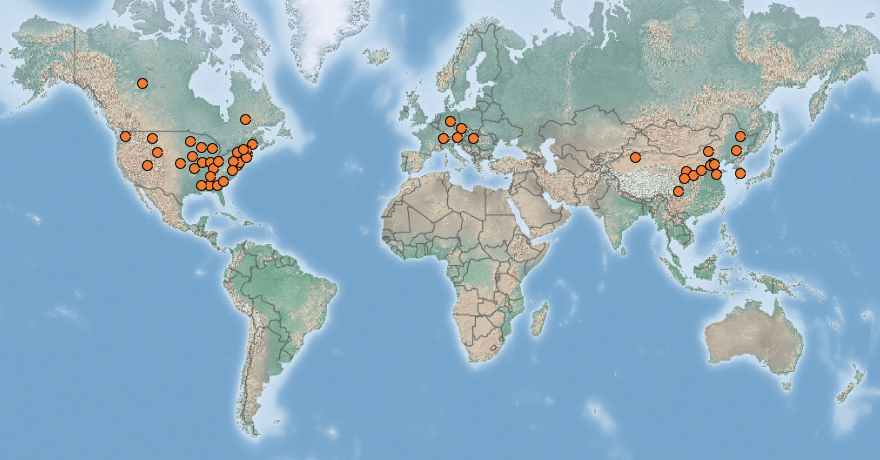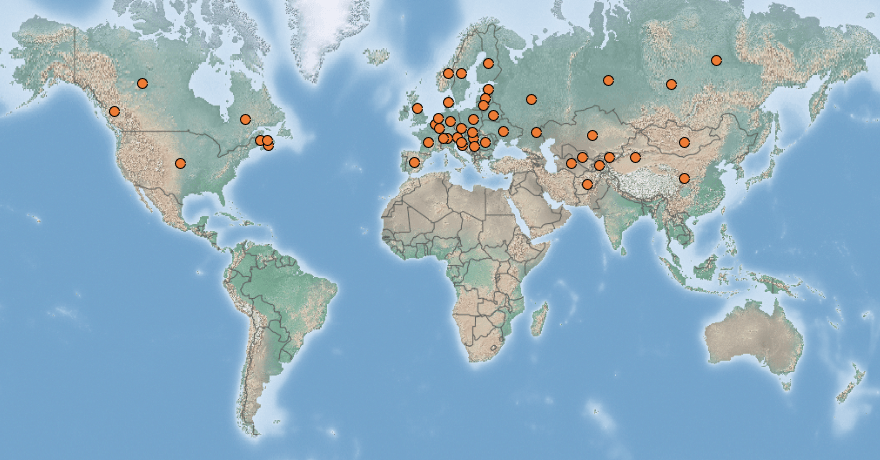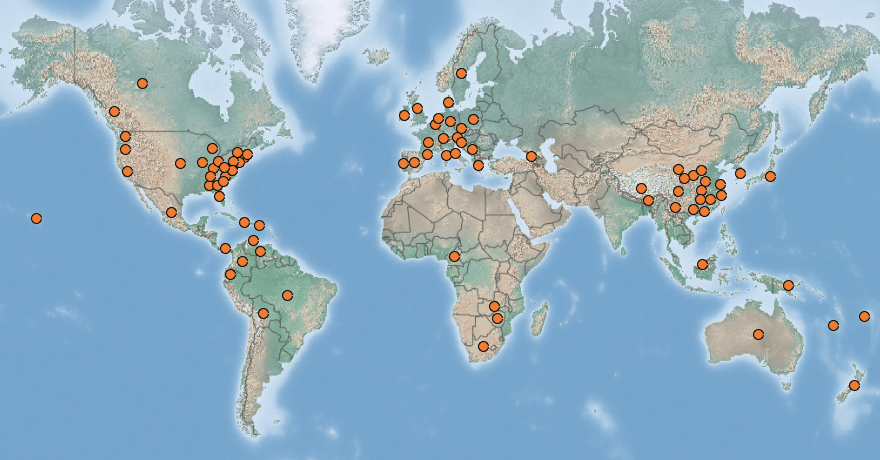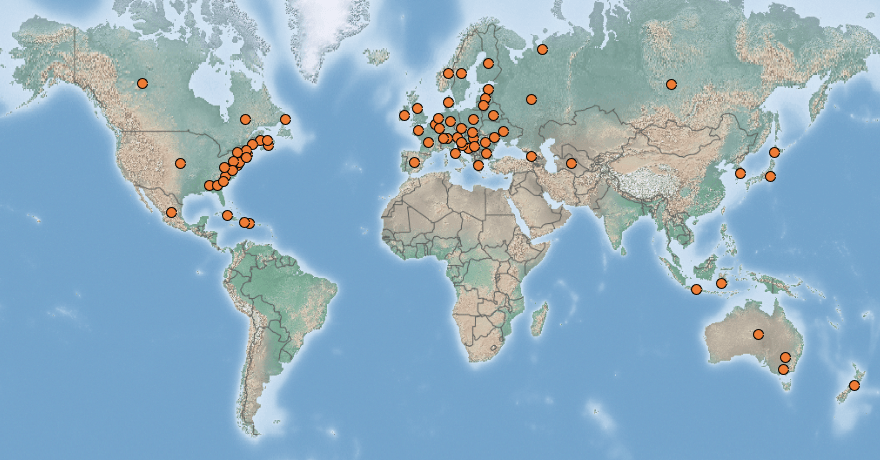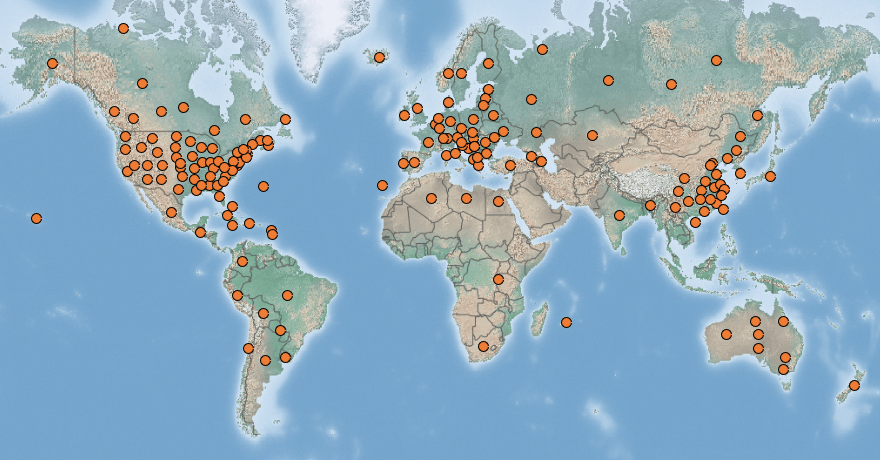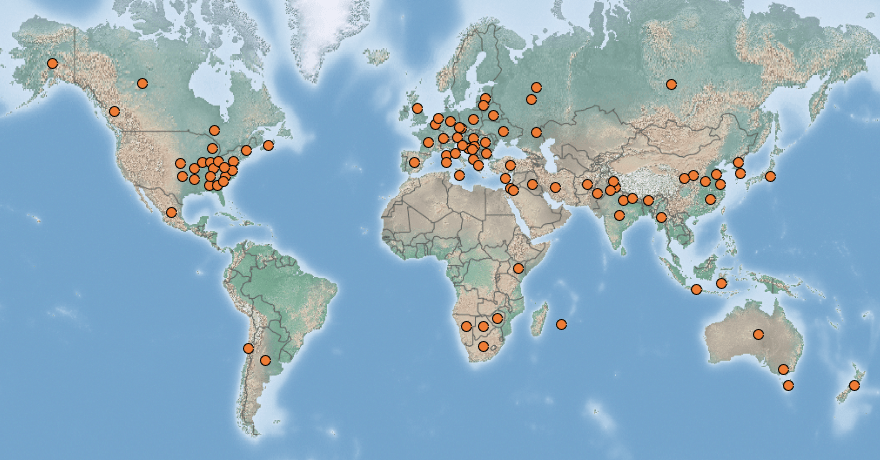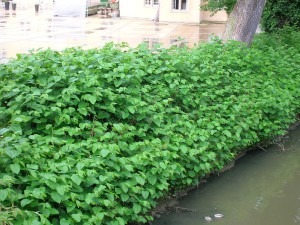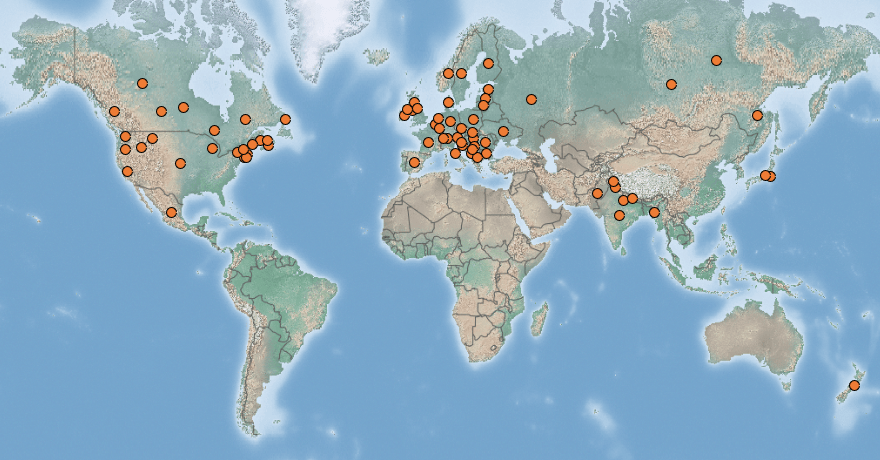 |
Himalayan Balsam |
Status LU: established. 1st record: LU <1897, ITW 1958. |
 |
Drüse-Sprangkraut |
Status Eur.: established. 1st record: UK 1839. IAS of EU concern (2017). |
 |
Impatiente de l’Inde, balsamine de l’Himalaya |
RA: ISEIA: A3, Black List. Harmonia+: 0,52. |
 |
Drüsiges Springkraut, Indisches S., Emscherorchidee |
Wikipedia:     | Wikispecies: | Wikispecies:  | CABI | CABI |
 |
Reuzenbalsemien |
Back to the list of neophytes |
Brief description
Impatiens glandulifera Royle occurs in many different habitats, but it thrives best on moist and nutrient-rich alluvial soils. It occurs on meadows, along rivers and brooks, and in floodplain forests, especially in areas disturbed by people. Long-distance dispersal of seeds is aided by flowing water, with fresh seeds transported in sediment on the beds of rivers, and buoyant dry seeds are able to float over large distances. The species may form dense stands that cover the soil, shade and replace native annual and even perennial plant species because of early germination and rapid growth. In some conditions, it can strongly reduce local species richness but this reduction is often temporary and concerns mostly widespread weeds and even other non–native species in ground-water table and flooding conditions. It may also displace native species through competition for pollinators, e.g. Stachys palustris. Its development can facilitate river bank erosion (Branquart et al. 2010).
IAS of Union concern
In 2017, Impatiens glandulifera was added to the list of invasive alien species of Union concern (Anonymous 2017) which implies that member states shall take all necessary steps to prevent it’s unintentional introduction or spread.
For Luxembourg, an action plan in accordance with Article 13(2) of Regulation 1143/2014 (Anonymous 2014a) has been finalised in 2020 (Pfeiffenschneider & Hoppe 2020).
Status and distribution in Luxembourg
Impatiens glandulifera Royle was first mentioned in Luxembourg under its synonym Impatiens glanduligera (Royle) as cultivated ornamental in the flora of Klein (1897: 249).
Impatiens glandulifera Royle was first documented in the wild under its synonym Impatiens roylei Walp. on 1958-10-06 by Jean-Jacques Kariger (1925-2018) in Hautcharage (Kariger 1961: 101, Krippel & Proess 2017). The next record was made by Léopold Reichling (1921-2009) on 4th August 1966 in Koetschette, municipality of Rambrouch (MNHNL 2000-).
With over 7.500 records of the species listed in the MNHNL-mdata online portal (2024), the species is established in Luxembourg and widespread throughout the country’s riparian ecosystems (MNHNL, iNaturalist & GBIF 2024). Most of these data have been collected during systematic inventories along the main watercourses in 2006-2008 (Glesener et al. 2009), 2013 (Pfeiffenschneider et al. 2014) and 2019.
The melliferous Himalayan balsam is one of the most common and widespread invasive neophytes in Luxembourg. It builds huge colonies along riparian ecosystems, often together with colonies of Bohemian knotweed. Several major rivers of Luxembourg are being affected. Huge populations can for example be seen along the river Sure between Ettelbruck and Michelau.
Spread into forest ecosystems
Since the end of the first decade of the 21st century, Himalayan balsam is increasingly spreading throughout the countryside, leaving the riverbanks and colonising other habitats like roadsides and forests. An example can be seen in the Our valley between Stolzembourg and Dasbourg-Pont, where the Himalayan Balsam managed to “jump” across the main road, to “climb” up the steep slopes and to “enter” the oak forests. Meanwhile Impatiens glandulifera occurs in many forests across the country.
Recent new records have confirmed that this invasive species is increasingly being observed far from any watercourse, often at the edge of forests (Krippel et al. 2020: 39).
Over the past 20 years, the dissemination of I. glandulifera in forest habitats has accelerated, and could be facilitated by (1) the strong pressure of propagules from widely spread riparian populations, (2) major disturbances, anthropogenic or natural, of forest ecosystems, (3) the increased use of forestry machinery capable of transporting seeds and (4) the high environmental tolerance of the species. The impacts of I. glandulifera in forest habitats can include negative impacts on the diversity of native plants and mycorrhizal fungi. I. glandulifera can also have a negative impact on the growth of planted forest plants. Measures listed to prevent the spread of I. glandulifera towards the forests: limitation of the disturbances of the ground and the transport of soil contaminated by seeds, logging before the release of the seeds of I. glandulifera in order to minimize any further spread (Čuda et al. 2020).
Management
Action plan
An action plan concerning the Himalayan Balsam has been published in 2020:
→ Finalised Action Plan for Impatiens glandulifera (Pfeiffenschneider & Hoppe 2020)
Valley of the Syr (Gutland)
In 2016, the federation of municipalities SIAS launched an eradication campaign along the river Syr. The shores of the Syr and its tributaries are partially covered with Himalayan Balsam. Since 2016, the affected parts of the water have been inspected annually and the plants removed if necessary in order to stem the further spread of the plants. In 2018, neophytes were removed over a length of approximately 3.9 km, where around 1.5 km between Moutfort and Oetrange was more severely infested, the 2.4 km from Oetrange towards Schuttrange less so. The annual removal of the balsam seems to improve the water sections (Anonymous 2014b: 4; “Aktionsplan Neophyten” in Anonymous 2019: 4).
Valley of the Blees (Oesling)
On 4 July 2009, the Nature Park Our took his first steps in the management of Impatiens glandulifera on the river Blees under the coordination of Béatrice Casagranda, involving a dozen volunteers, amongst others staff from Foundation “Hëllef fir d’Natur”. At the time, this action was strongly criticized by several beekeepers.
In summer 2017 the Nature Park of the Our Valley launched a pilot project to free the small river Blees (20 km) from Himalayan Balsam, in co-operation with the National Museum of Natural History (Ehl & Gengler 2018; Ehl 2019). At the beginning, the project focused on the first 4 km of the river Blees, in order to avoid new upstream invasions. Several habitats along the river were heavily impacted by the presence of Himalayan Balsam. In the starting year of the project, the management was exclusively done manually, which turned out to be not efficient enough for most impacted zones. The collected biomass is transported for treatment to the biogas plant in Hosingen (Klein 2019).
In 2018, the management was significantly improved through the use of brushcutters beside the manual management in less accessible zones. This led to a significantly lower presence of individuals at the beginning of the 2019 management season. Thus, the management workload could be reduced by half, which allowed extension of the management by an extra 2 km downstream. We expect more tangible results in the years to come (Klein 2019).
In the course of 2019, the successes achieved so far in the control of Himalayan balsam on the Blees from the previous year have been confirmed. In addition to a large-scale reduction in linear stands, fewer punctual stands were also detected. It also became apparent that the control of dense stands, which were not very successfully collected by hand in 2017, can lead to lasting success with mechanical measures. For example, after the large-scale expansion in July 2018, the populations in the ‘Iwwer Ehlerhämicht’ area had already declined significantly or even disappeared completely by October after the first mechanical work; even in 2019, only small residual populations were found in this area. However, manual collection, which is a less invasive control method, was successful in the less densely overgrown areas and should continue to be used in such low-density stands or as a follow-up measure after multi-annual mowing (Ehl 2020).
Despite the declines in population observed so far, it is urgently not advisable to stop the systematic control of Himalayan balsam in the northern study area in the upper reaches of the Blees. As described in the literature and confirmed in our observations, incomplete control (even with 99% population decline) is almost as ineffective as if no measures had been implemented at all (Wadsworth et al. 2002). In the Stommert and Ënner Fuusselach areas, larger populations have developed again in 2019 from the existing seed bank or from individual plants remaining in the control areas. Successful control is therefore only possible if every single plant of the Himalayan balsam is removed during control so that the existing seed bank cannot renew itself. In addition to the recommended combination of mechanical work in the case of extensive stands and manual collection in the case of smaller stands or in the case of follow-up maintenance, the work must be carried out systematically over a longer period of time (Ehl 2020, Ehl at al 2023).
Nature park Mullerthal (Gutland)
On July 27, 2019, a management action against Himalayan Balsam took place around the Consdorf Mill and the upstream ponds. About ten people participated in the action, which also raised awareness among people walking on the trails adjacent to the managed sites. The green waste generated by the action was evacuated to the Miny biogas facility in Nommern. A problem with the removed biomass was the relatively large volume of soil attached to the roots. In order to avoid this problem in the future, it is recommended to leave the roots on the site (Pfeiffenschneider 2019: 1).
Neighbouring countries
Successful management of Himalayan Balsam has been reported from two regions in France: the catchment areas of the river Risle (Eure) (Royer & Blottière 2019) and the river Graine (Haute-Vienne et Charente) (Fernandez 2015).
Risk assessment
ISEIA protocol
A3 (3+3+2+3) = Black List (Ries et al. 2013: 18).
Harmonia+ protocol
Overall risk score 0,52 = (Overall Invasion score 0,87 x Overall Impact score 0,60) (Ries et al. 2020).
0,87


Invasion
0,60


Impact
0,52


Risk
Worldwide distribution
Alien Impatiens taxa
Six alien balsam species have been reported in Luxembourg, Impatiens noli-tangere L. being the only native species.
- Impatiens balfourii Hook.f.: Balfour’s touch-me-not, first observed in 2016 in the wild in Luxembourg.
- Impatiens balsamina L.: the garden balsam is already mentioned in Krombach’s flora of 1875 as “Introduced from the East Indies and grown in all gardens” (Krombach 1875: 56).
- Impatiens capensis Meerb. is an annual plant native to eastern North America that is currently spreading across Europe. In Luxembourg, it was first reported on 2021-10-11 from the Moselle valley.
- Impatiens glandulifera Royle: the invasive Himalayan Balsam, which is widespread in riparian ecosystems and forests across Luxembourg.
- Impatiens parviflora DC.: the small balsam, which is widespread in forests across Luxembourg.
- Impatiens walleriana Hopok. f. was reported once as cultivated in Rumelange in 1946.
In 2011 the annual hybrid Impatiens parviflora × I. balfourii was discovered in the canton of Ticino in Switzerland. The fertile hybrid with alternating leaves can be up to 60 cm high. Considerable populations of the hybrid were observed in 2014 in the canton of Ticino in the absence of the parent species (Van Valkenburg et al. 2019).
Fact sheet and leaflet
PDF fact sheet of the Nature and Forestry Administration: FR | DE
In early spring 2020 the Department for the Environment of the Luxembourg Ministry for environment, climate and sustainable development edited leaflets in German and French about Fallopia japonica, in co-operation with the National Museum of Natural History and efor-ersa ingénieurs-conseils. They can be downloaded here in PDF format (~ 4 MB each).


Bibliography
- Albers, M., S. Kohn, J. Steng & M. Pfeiffenschneider, 2001. – Problematik der Bioinvasion. Kartierung von Japan-Knöterich, Riesenbärenklau und Indischem Springkraut an Woltz, Clerve und Wiltz. Ergebnisse der Kartierung. – Studie des Büros ERSA im Auftrag von: Administration des eaux & forêts, arrondissement nord. August 2001. 7S. + Anhang.
- Anonymous, 2014. Regulation (EU) No 1143/2014 of the European Parliament and of the Council of 22 October 2014 on the prevention and management of the introduction and spread of invasive alien species. Official Journal of the European Union L 317: 35-55 (4.11.2014).
- Anonymous, 2014. Naturschutz in den SIAS-Gemeinden 2014. La sauvegarde du patrimoine naturel dans les communes du SIAS. n.p. Biologische Station – Naturzenter SIAS. URL: http://www.sias.lu/dl/Infoblad_2014_1404503.pdf [accessed 2019-10-11]
- Anonymous, 2017. Commission implementing regulation (EU) 2017/1263 of 12 July 2017 updating the list of invasive alien species of Union concern established by Implementing Regulation (EU) 2016/1141 pursuant to Regulation (EU) No 1143/2014 of the European Parliament and of the Council. Official Journal of the European Union L 182: 37-39 (13.7.2017).
- Anonymous, 2019. Tätigkeitsbericht 2018. Biologische Station SIAS. URL: http://www.sias.lu/dl/Taetigkeitsbericht2018.pdf [accessed 2019-10-11]
- Branquart, E., S. Vanderhoeven, W. Van Landuyt, F. Van Rossum, F. Verloove & A. Vervoort, 2010. Harmonia database: Impatiens glandulifera Royle. Harmonia version 1.2, Belgian Forum on Invasive Species. URL: http://ias.biodiversity.be [accessed on 2019-10-09]
- CABI, 2021. Impatiens glandulifera. In: Invasive Species Compendium. Wallingford, UK: CAB International. URL: www.cabi.org/isc [accessed 2021-03-04]
- Čuda J., H. Skálova & P. Pyšek, 2020. Spread of Impatiens glandulifera from riparian habitats to forests and its associated impacts: insights from a new invasion. Weed Research 60: 8-15.
- Ehl, S. & C. Gengler, 2018. Pilotprojekt zur systematischen Bekämpfung von Impatiens glandulifera an der Blees [Bericht 2017]. Projektbericht, EFOR-ERSA, 21 S. + Anhang.
- Ehl, S., 2019. Bekämpfung von Impatiens glandulifera an der Blees – Bericht 2018. Projektbericht, EFOR-ERSA, 25 S. + Anhang.
- Ehl, S., 2020. Bekämpfung vom Impatiens glandulifera an der Blees – Bericht 2019. Projektbericht, EFOR-ERSA, 37 S. + Anhang.
- Ehl, S., A. Klein & C. Ries, 2023. It’ s a marathon, not a sprint: The management of Impatiens glandulifera at the upper reaches of the river Blees in the Naturpark Our (Luxembourg). Bulletin de la Société des naturalistes luxembourgeois 125: 25-36.
- Fernandez, S., 2015. Interventions de gestion de la Balsamine de l’Himalaya sur le bassin versant de la Graine. URL: http://www.especes-exotiques-envahissantes.fr/wp-content/uploads/2018/10/balsamine_r.pdf [accessed 2019-10-22]
- Glesener, B., M. Pfeiffenschneider & C. Ries, 2009. Die Verbreitung von Impatiens glandulifera, Fallopia japonica, F. sachalinensis, F. ×bohemica und Heracleum mantegazzianum entlang der Hauptfließgewässer Luxemburgs. Bull. Soc. Nat. luxemb. 110 : 69-73. (pdf)
- Kariger, J.-J., 1961. Plantes intéressantes, rares ou nouvelles pour le Grand-Duché de Luxembourg, trouvées en 1957 et 1958. Bull. Soc. Nat. luxemb. 63: 100-103.
- Klein, A., 2019. Personal communication giving a résumé of the project by email to C. Ries on 18 October 2019.
- Klein, E.J., 1897. Die Flora der Heimat : Sowie die hauptsächlichster bei uns kultivierten fremden Pflanzenarten biologisch betrachtet : Eine Anleitung zur selbständigen Beobachtung der Lebens- und Anpassungserscheinungen in der Pflanzenwelt. Diekirch: J. Schroell., 552 pp.
- Krippel, Y., T. Helminger & G. Colling, 2020. Notes floristiques. Observations faites au Luxembourg (2018-2019). Bulletin Soc. Nat. luxemb. 122 : 29-55. [PDF 132 KB]
- Krippel, Y. & R. Proess, 2017. Impatiens balfourii Hook. f. (Balsaminaceae), nouvelle espèce subspontanée au Luxembourg ?. Bull. Soc. Nat. luxemb. 119: 55-61.
- Krombach, J.-H.-G., 1875. Flore du grand-duché de Luxembourg. Plantes phanérogames. 564 p. Luxembourg, Imprimerie Joris.
- Lambinon J. & F. Verloove, 2012. Nouvelle flore de la Belgique, du grand-duché de Luxembourg, du Nord de la France et des régions voisines. Sixième édition. Avec la collaboration de L. Delvosalle, B. Toussaint, D. Geerinck, I. Hoste, F. Van Rossum, B. Cornier, R. Schumacker, A. Vanderpoorten et H. Vannerom. Jardin botanique national de Belgique, Meise. CXXXIX + 1195 pp. ISBN : 9789072619884.
- MNHNL, 2000-. Impatiens glandulifera Royle in Recorder-Lux, database on the natural heritage of the Grand Duchy of Luxembourg. Musée national d’histoire naturelle, Luxembourg. URL: https://mdata.mnhn.lu [Accessed 2019-10-09]
- MNHNL, iNaturalist & GBIF, 2019. Impatiens glandulifera Royle in MNHNL-mdata, online portal combining species observation from Recorder-Lux, iNaturalist and GBIF. National Museum of Natural History, Luxembourg. URL: https://mdata.mnhn.lu [Accessed 2019-10-09]
- Pfeiffenschneider, M., 2001. – Problematik der Bioinvasion. Nationales Inventar von Riesenbärenklau, Indischem Springkraut und exotischen Knötericharten. Ergebnisse einer Umfrage und Konzept zur Bekämpfung der Riesenbärenklaubestände. – Studie des Büros ERSA im Auftrag von: Administration des eaux & forêts, Service de la conservation de la nature, November 2001. 23 S. + Anhang, Luxembourg.
- Pfeiffenschneider, M., 2007. Über die Verbreitung von Heracleum mantegazzianum, Impatiens glandulifera, Fallopia japonica und F. sachalinensis entlang der Gewässer Obersauer, Woltz, Clerve, Wiltz und ihrer Nebengewässer (Luxemburg). Bull. Soc. Nat. luxemb. 108 : 7-10. (pdf)
- Pfeiffenschneider, M., 2008. Neophyten in Luxemburg – Projekt Bioinvasion 2007. Arbeitsbericht. 18 S. (pdf)
- Pfeiffenschneider, M., 2019. Plan d’action pour la lutte contre les principales plantes exotiques envahissantes dans les parcs naturels de l’Our et du Mullerthal. Procès verbal de la réunion du 24 septembre 2019. 3p.
- Pfeiffenschneider, M. & F. Hoppe 2020. Plan d’action pour espèces exotiques envahissantes au Grand-Duché de Luxembourg : Impatiente de l’Inde, Impatiens glandulifera (Royle). Version du 2020-06-15. Administration de la nature et des forêts, Luxembourg. 19 pp.
- Pfeiffenschneider, M. & M. Owaller, 2000. – Kartierung von Japan-Knöterich, Riesenbärenklau und Indischem Springkraut an der Obersauer. Theoretische Grundlagen und Ergebnisse der Kartierung.. – Studie des Büros ERSA im Auftrag von: Administration des eaux & forêts, acrrondissement nord. August 2000. 37S. + Anhang, Luxembourg.
- Pfeiffenschneider, M., P. Gräser & C. Ries, 2014. Distribution of selected neophytes along the main rivers of Luxembourg. Bull. Soc. Nat. luxemb. 115: 101-108. [PDF 3668 KB]
- Ries, C. & Y. Krippel, 2021. First records of 56 invasive alien vascular plants in Luxembourg. Bulletin de la Société des naturalistes luxembourgeois 123: 115-127. [PDF 241 KB]
- Ries, C., Y. Krippel & M. Pfeiffenschneider, 2020. Risk assessment after the Harmonia+ protocol of invasive alien vascular plant species in Luxembourg. Bull. Soc. Nat. luxemb. 122: 197-205. [PDF 132 KB]
- Ries, C., Y. Krippel, M. Pfeiffenschneider & S. Schneider, 2013. Environmental impact assessment and black, watch and alert list classification after the ISEIA Protocol of non-native vascular plant species in Luxembourg. Bull. Soc. Nat. luxemb. 114: 15-21. [PDF 652 KB]
- Royer, R. & D Blottière, 2019. Éradication de la Balsamine de l’Himalaya par arrachage manuel sur plusieurs sites de la Risle (Eure). URL: http://especes-exotiques-envahissantes.fr/wp-content/uploads/2019/10/rex_balsamine-eure_vf.pdf [accessed 2019-10-22]
- Wadsworth, R.A., Collingham, Y.C., Willis, S.G., Huntley, B. & Hulme, P.E. (2002): Simulating the spread and management of alien riparian weeds: are they out of control? British Ecological Society. Journal of Applied Ecology 37: 28-38.
Page content last updated on 2024-07-31. Last proofread by Caroline Grounds on 2019-11-19.







 | Wikispecies:
| Wikispecies:  | CABI
| CABI
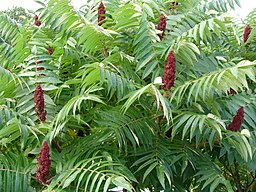

 Invasion
Invasion
 Impact
Impact
 Risk
Risk
